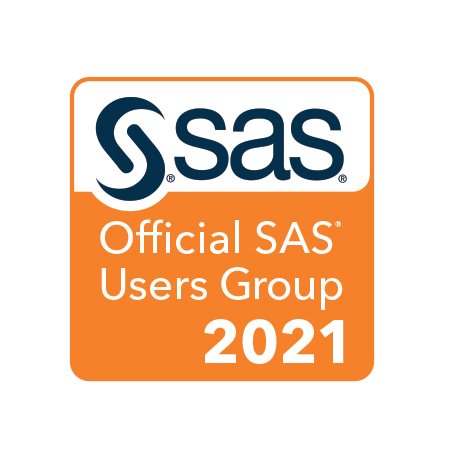Sunday, 11/4/2012 1 pm – 5 pm
Creating Complex Reports by Cynthia Zender
This seminar is for intermediate SAS programmers. In the seminar, we will investigate how eight (8) complex reports were produced with SAS.
All the code that produced the reports will be covered, in detail. All report output is produced using ODS (rather than LISTING) output.
The reports to be covered include three versions of a standard demographic report, producing a color-banded report with PROC TABULATE, producing a report which uses special fonts (Bissantz SparkFonts) to produce a sparkline report, several graph examples and several unique report ordering examples. Procedures/Topics to be covered include: REPORT, TABULATE, FORMAT, MEANS, FREQ, Macro processing and DATA _NULL_ programming (as used to produce the reports). Refer to the SAS Global Forum paper to see the actual reports which will be discussed in detail.
Sunday, 11/4/2012 8 am – 5 pm
SAS® Essentials Boot Camp (New) by Kirk Paul Lafler
This course teaches the basics of the SAS System. Emphasis is placed on combining the power of the DATA and PROC step to process data. It builds an excellent foundation of knowledge and provides the necessary skills to begin using the SAS System. Attendees learn how to write, submit, and debug SAS programs using the SAS Display Manager System (DMS); read and process raw data; create temporary and permanent SAS data sets; process Excel data using SAS; create detail reports using the PRINT, SQL, FORMS, and REPORT procedures; create summary level output using the CHART, FREQ, MEANS, and UNIVARIATE procedures; construct subsetting and conditional programming logic using the DATA step language including INFILE, INPUT, SET, subsetting IF, IF-THEN/ELSE, WHERE, KEEP=/DROP=, WHEN/THEN, DO/END, DO WHILE, DO UNTIL, simple arrays, and other statements; manipulate numeric and character data; perform sorting and by-group processing; combine data using concatenation, match-merging, and joining techniques; modify and update data; and manage SAS data sets with the APPEND, CONTENTS, COPY, DATASETS, and OPTIONS procedures.
Intended Audience: All SAS users
Prerequisites: No previous SAS software experience required
Delivery Method: Instructor-led and/or Hands-on with code examples and self-study
Length: 1 Day
Course Material: Course Notes are provided
Wednesday, 11/7/2012 8 am – 12 pm
PROC SQL Programming: The Basics and Beyond (Newly Updated) by Kirk Paul Lafler
This course teaches SAS users core concepts and features about accessing data stored in relational database tables. Attendees learn how to use PROC SQL to access data stored in relational tables; accomplish essential programming tasks including retrieving, subsetting, ordering, and grouping data; create new tables; construct “virtual” tables known as views; define, access and manipulate data; produce “quality” looking output with PROC SQL options and Output Delivery System (ODS); use summary (statistical) functions to aggregate data; understand the difference between DATA step merges and joins; create complex queries using inner and outer joins; construct logic scenarios with case expressions; interface PROC SQL with the macro facility; understand index rules and strategies; and apply query performance techniques.
Intended Audience: All SAS users
Prerequisites: SAS Essentials course or 6-months SAS software experience
Delivery Method: Instructor-led with code examples
Length: ½-Day
Course Material: Course Notes are provided
Wednesday, 11/7/2012 1 pm – 5 pm
Building Reusable Tools with the SAS® Macro Language (Newly Updated) By Kirk Paul Lafler
The SAS® Macro Language is a powerful feature for extending the capabilities of the SAS System. This course presents a collection of techniques for constructing reusable and effective macros tools. Attendees learn how to build functional macros that process statements containing SAS code; learn basic design principles in the development of reusable macro tools; create macros containing keyword and positional parameters; utilize defensive programming techniques; build a library of macro utilities; interface the macro language with the SQL procedure; and develop efficient and portable macro language code.
Intended Audience: All SAS users
Prerequisites: Introduction to SAS Macro course or 1-year SAS software experience
Delivery Method: Instructor-led with code examples
Length: ½-Day
Course Material: Course Notes are provided



